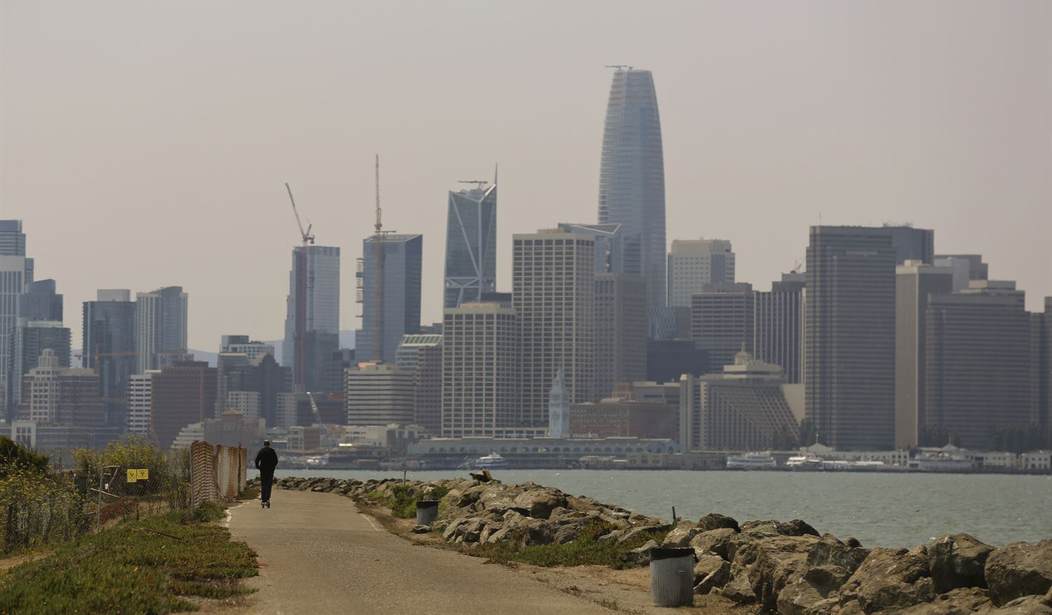Last year columnist Thomas Edsall wrote a lengthy piece about the concept of the “urban doom loop” driven by the pandemic. There’s a lot to say about this topic and you can read some of the background here and here but the very short version goes like this:
- In response to the pandemic, lots of fairly well off white collar workers moved out of city centers and relocated (temporarily) to suburban areas or second homes.
- The need to keep businesses running spawned the widespread adoption of ways to get around people not being in the office, i.e. zoom meetings.
- As people who’d escaped the cities realized they could do their jobs from home for extended periods, a return to the cities became optional. For many, the move to the suburbs became permanent.
- With fewer people working downtown, there was much less need for secondary businesses that were dependent on those workers. Restaurants and shops closed permanently.
- With many fewer people needing to work downtown, the need for public transport collapses.
- As people settle in to working 3 days in the office and two days out, the need for commercial real estate drops. Like the shops that once supported them, many office buildings are partly empty.
- With shops, restaurants and offices partly empty, tax revenue to cities declines dramatically, making it difficult to maintain services.
That’s the basic disruption of the urban center model of American life. The loop part of it comes from the fact that all of these changes seem likely to drive further decline over time. For instance, if the metro rail system (in LA or San Francisco) loses half its paying riders, those systems are forced to cut services substantially. As they cut services, getting downtown becomes more of a hassle, potentially making another day in the home office more appealing. Similarly, if there’s less tax revenue the ability to spend money on schools or dealing with problems like crime, drug addition and homelessness declines. The problems become more visible (think open-air drug markets and tent cities) driving more people away from downtown. Basically, the more office work declines, the more likely it is to keep declining.
Today, Thomas Edsall is back with another column on this topic titled “‘The Era of Urban Supremacy Is Over’.”
Most of the nation’s major cities face a daunting future as middle-class taxpayers join an exodus to the suburbs, opting to work remotely as they exit downtowns marred by empty offices, vacant retail space and a deteriorating tax base.
The most recent census data “show almost unprecedented declines or slow growth especially in larger cities,” William Frey, a demographer and senior fellow at Brookings, emailed in response to my query…
This is the first time, Frey continues, “that the nation’s major metro areas registered an annual negative growth rate since at least 1990.”
Stanford economist Nicolas Bloom spelled out who the big losers were in this new normal.
First the big-city mayors. These big-city mayors are losing vast amounts of tax revenue to the suburban cities. They are losing retail taxes, property taxes (as property values are down), office taxes and hotel taxes. San Francisco is losing revenue to East Bay, South Bay and other surrounding counties as the activity moves further out. These surrounding counties are having a tax windfall, but the central cities are struggling.
Bloom believes there’s an upside to this in that cities will become more affordable and less gentrified. But even if that’s true in the long run the disruption seems to be having lots of negative impacts in the short run. As Joel Kotkin, executive director of the Urban Reform Institute in Houston, put it “The era of urban supremacy is over. The party that addresses this will win.”
The reference to party isn’t incidental. There’s no doubt which political party in the US has been the most favorable toward major cities and which one has always done better in rural and exurban areas. With the cities emptying themselves it’s not much of a stretch to see this having a greater impact on one party than the other. After all, the mayors of most of these cities, i.e. the people who will be expected to deal with this decline, are Democrats.
Politically, it would be devastating for the Democratic Party, which already faces voter anger over manifestations of urban dysfunction: homeless encampments, rising homicide rates, rampant crime and a sense of disorder on city streets and in city schools.
And that brings us back to the doom loop. As Edsall puts it “dysfunction tends to engender dysfunction.” All you have to do is open a paper in any major city on the west coast on any given day and you can see this happening in real time. Shops are plagued with thieves and police are already in such short supply that they can’t deal with low level crime. Add to that the progressive prosecutors who don’t want to file charges in these cases and you create a business environment that is not survivable for many. Those business owners that remain find themselves living in an outdoor psych ward, desperate for help that probably isn’t coming.
Significant parts of the urban doom loop are already happening. I’ve written about the decline in metro ridership in both LA and San Francisco recently. These systems are headed for failure in the very near future unless something changes. The Democrats who run these cities have their work cut out for them.









Join the conversation as a VIP Member